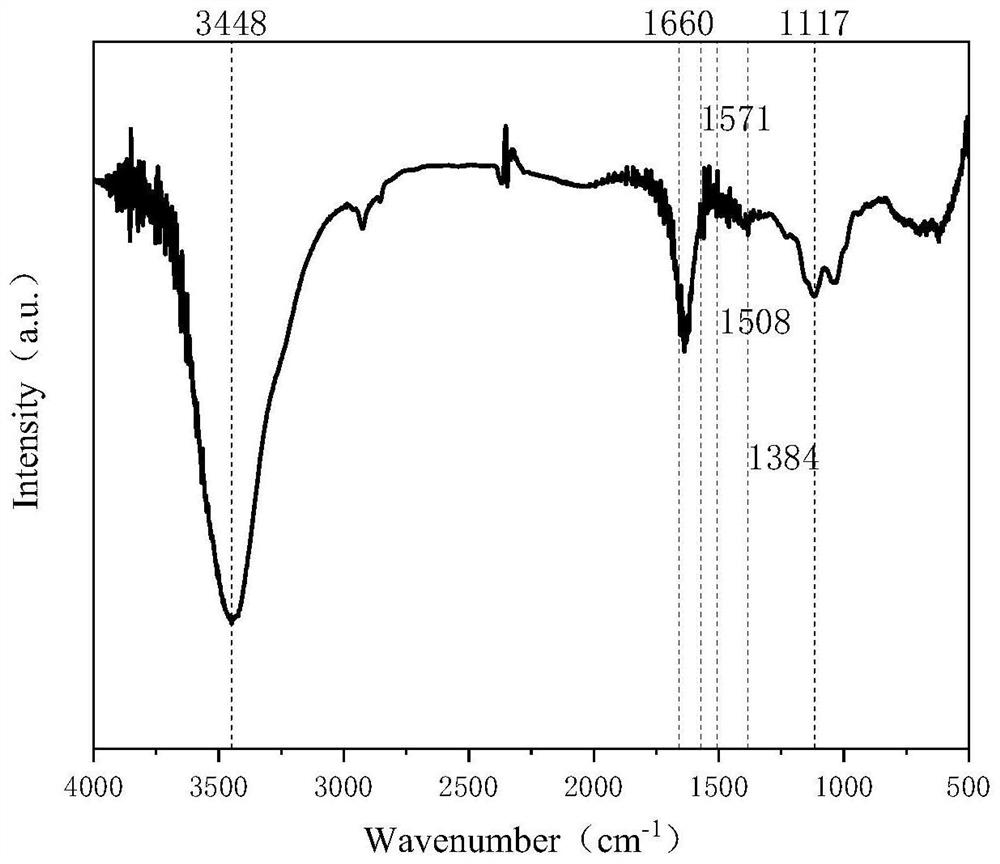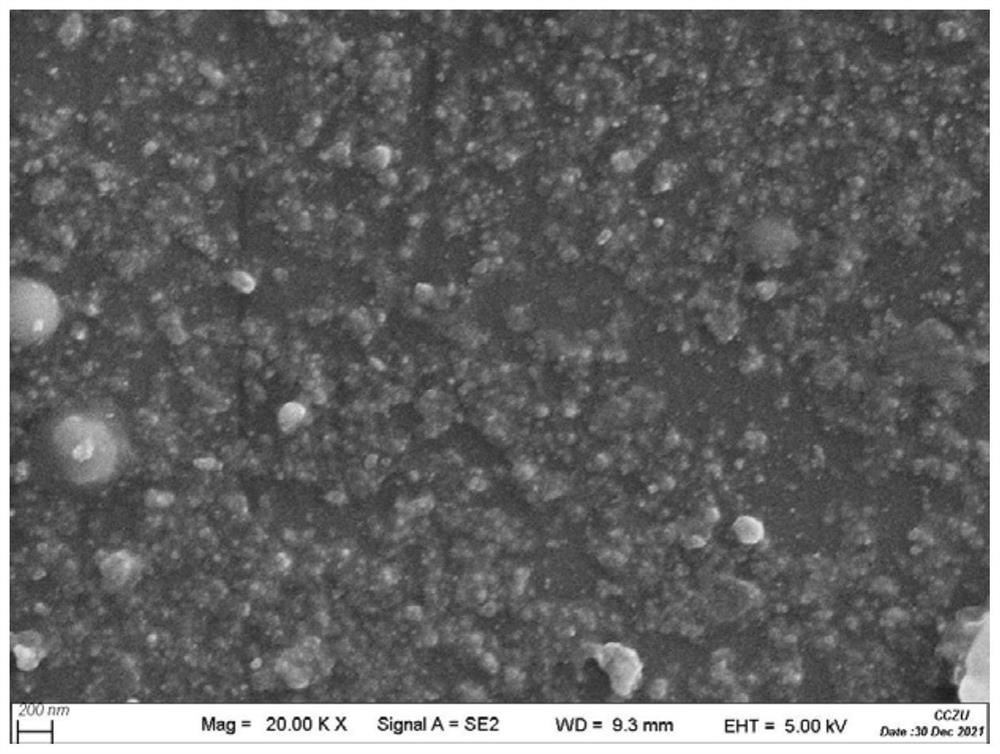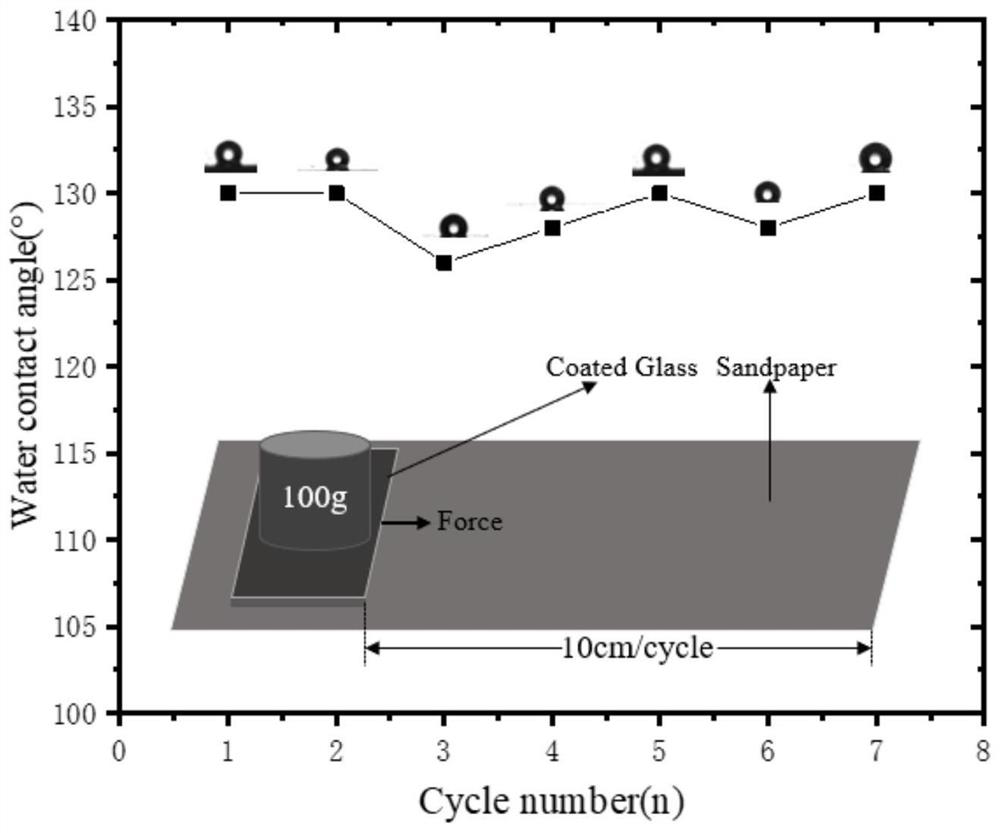High-transparency hydrophobic self-cleaning MOFs coating and preparation method thereof
A high-transparency, self-cleaning technology, applied in the coating field, can solve the problems of easy-to-wear lubricants, low hysteresis angle, poor mechanical stability, etc., and achieve low refractive index, high light transmittance and good self-cleaning effect Effect
- Summary
- Abstract
- Description
- Claims
- Application Information
AI Technical Summary
Problems solved by technology
Method used
Image
Examples
Embodiment 1
[0024] (1) Immerse the glass substrate in a n-hexane solution containing 1% 3-aminopropyltriethoxysilane, soak it at 25°C for 2 hours, take out the glass substrate and rinse it with n-hexane, and dry it in a drying oven at 100°C for 1 hour;
[0025] (2) The glass substrate loaded with 3-aminopropyltriethoxysilane was immersed in a 100 mL N,N-dimethylformamide solution hydrothermal reaction kettle containing 5.95 g of tetrafluoroterephthalic acid for a closed reaction at 120 °C for 4 h, Then, it was immersed in 100 mL of N,N-dimethylformamide solution containing 5.83 g of zirconium chloride and reacted at 120° C. for 20 min, ending one cycle. The same procedure was cycled twice, and 2-layer MOFs coatings were prepared on glass substrates.
[0026] (3) The glass substrate with two layers of MOFs coating was immersed in chloroform for 48h, and vacuum-dried at 100°C for 12h to obtain a transparent hydrophobic self-cleaning MOFs coating. The measured average transmittance in the v...
Embodiment 2
[0028] The preparation of 3-aminopropyltriethoxysilane on the glass substrate is the same as that in Example 1.
[0029] (1) The glass substrate attached to 3-aminopropyltriethoxysilane was immersed in 100 mL of N,N-dimethylformamide solution containing 5.95 g of tetrafluoroterephthalic acid in a hydrothermal reaction kettle at 120°C for 4 hours of airtight reaction. Then, it was immersed in 100 mL of N,N-dimethylformamide solution containing 5.83 g of zirconium chloride and reacted at 120° C. for 20 min, ending one cycle. The same procedure was cycled 5 times to prepare 5-layer MOFs coatings on glass substrates.
[0030] (2) The glass substrate with 5 layers of MOFs coating was immersed in chloroform for 48h and vacuum dried at 100°C for 12h to obtain a transparent hydrophobic self-cleaning MOFs coating. The measured average transmittance in the visible light range is as high as 92.26%, the water contact angle is 130°, and the hysteresis angle is 10°.
[0031] It can be obt...
Embodiment 3
[0036] The preparation of 3-aminopropyltriethoxysilane on the glass substrate is the same as that in Example 1.
[0037] (1) The glass substrate attached to 3-aminopropyltriethoxysilane was immersed in a 100 mL N,N-dimethylformamide solution containing 5.95 g of tetrafluoroterephthalic acid in a hydrothermal reaction kettle at 120°C for a closed reaction for 4 hours. Then, it was immersed in 100 mL of N,N-dimethylformamide solution containing 5.83 g of zirconium chloride and reacted at 120° C. for 20 min, ending one cycle. The same procedure was cycled 6 times to prepare 6-layer MOFs coatings on glass substrates.
[0038] (2) The glass substrate with 6 layers of MOFs coating was immersed in chloroform for 48h and vacuum dried at 100°C for 12h to obtain a transparent hydrophobic self-cleaning MOFs coating. The measured average transmittance in the visible light range is as high as 91.26%, the water contact angle is 130°, and the hysteresis angle is 10°.
PUM
 Login to View More
Login to View More Abstract
Description
Claims
Application Information
 Login to View More
Login to View More - R&D
- Intellectual Property
- Life Sciences
- Materials
- Tech Scout
- Unparalleled Data Quality
- Higher Quality Content
- 60% Fewer Hallucinations
Browse by: Latest US Patents, China's latest patents, Technical Efficacy Thesaurus, Application Domain, Technology Topic, Popular Technical Reports.
© 2025 PatSnap. All rights reserved.Legal|Privacy policy|Modern Slavery Act Transparency Statement|Sitemap|About US| Contact US: help@patsnap.com



